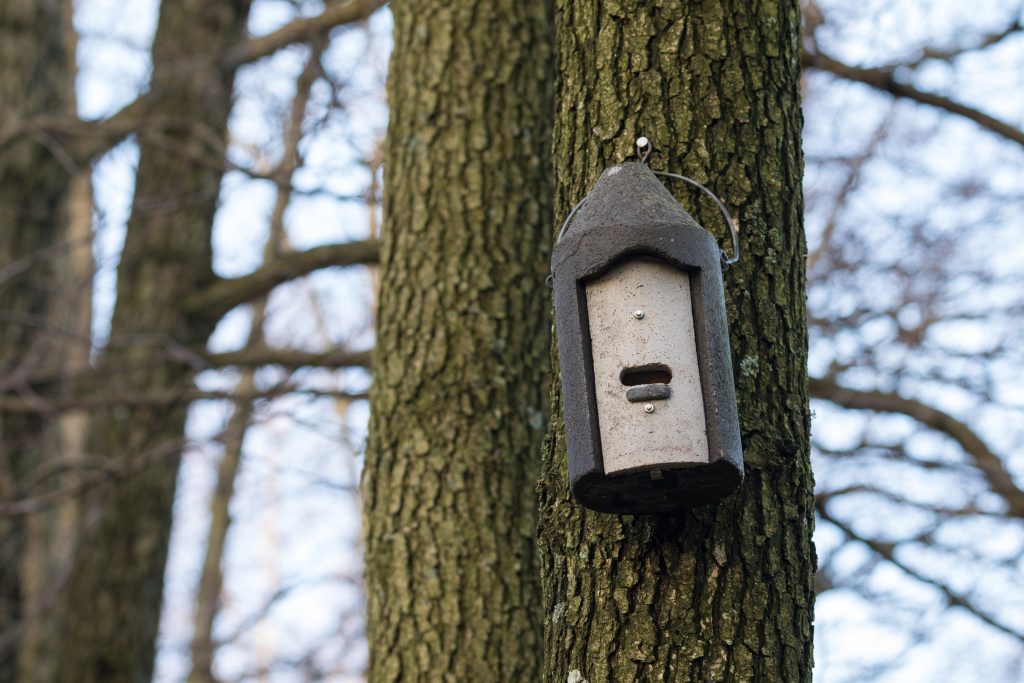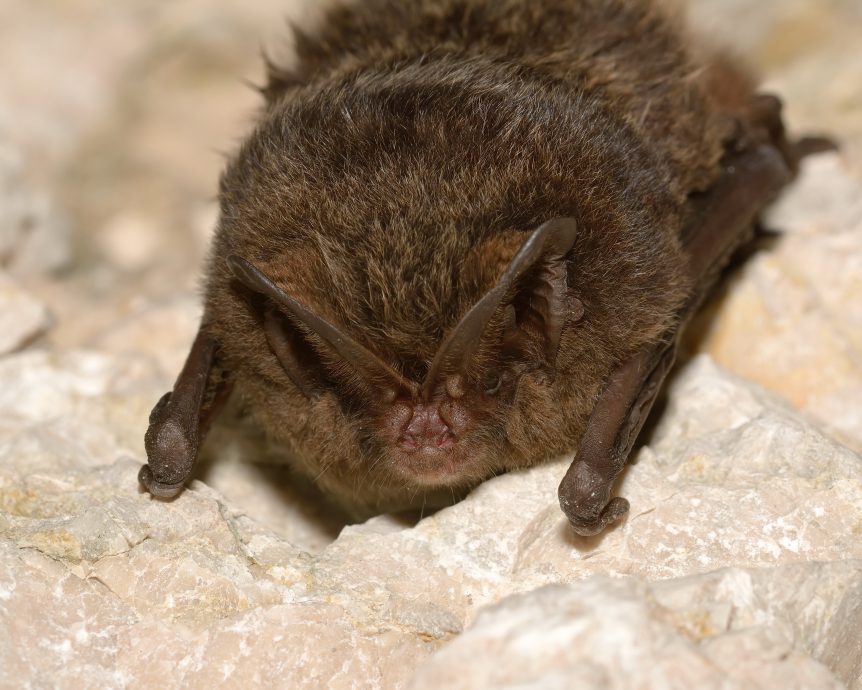17th April marks Bat Appreciation Day – a day to celebrate bats whilst also highlighting the importance these furry, flying mammals have in today’s world.
With over 100,000 acres of land under its stewardship, Tarmac has a vast array of bat species across its sites, not only at its restored quarries and non-operational land but also at its active quarries located in Somerset right through to Northumberland.
Bats are considered to be critically endangered and hold a crucial place in the ecosystem. Not only do bats help to control agricultural pests, but some of them also pollinate flowers, and create rich fertiliser for landowners, farmers, and local communities.
There are more than 1,300 known species of bat, with almost 70% of these being insectivores – in other words, they feed off insects. Contrary to their reputation, many species of bat also eat fruit.
So where do bats call home?
There are Tarmac sites across the length and breadth of the UK which are home to many species of bat.
Panshanger Park
With nine species of bat including the rare barbastelle bat, Panshanger Park is one of Tarmac’s most bat populated sites. Panshanger contains 176 hectares of woodland and has more than 800 veteran trees throughout the park. Veteran trees have a multitude of features such as cavities, broken limbs with decaying wood retained, splits, sap runs or flaking bark where bats can roost. This woodland provides an important sanctuary for bats, where they can safely venture out to forage for food, with the bats particularly attracted to the wetlands where many insects breed.
Halecombe Quarry
After careful management of a colony of endangered bats at Halecombe quarry in Somerset Tarmac has encouraged further bat species to roost at the quarry. Bats were found roosting in Rookery Farmhouse, a Grade II listed building dating back to the 17th century. Requiring a much-needed renovation, working with Mendip Council, Natural England, English Heritage, and supported by a local ecologist, Tarmac commissioned a building of a temporary roost close to the farmhouse while the renovation works took place. When the works were completed, the temporary roost remained, encouraging further species of bats to the site. While most of the lesser horseshoe bats returned to the farmhouse, some of them continued in the temporary building which is now a mating roost.
Beechburn – A former Tarmac sand and gravel site
Based in County Durham, the site had remained unrestored for several years. Close to woodland and the River Wear corridor, a favoured foraging area for bats, resident bat roosts developed in some of the buildings on-site. Restored in 2010, one of the buildings was retained as roost habitat, in mitigation for the loss of the other roosts and buildings. Various modifications were made to the retained building including internal walling with cavities, vents in the external walls to permit easy access, securing of the doorways and windows to prevent entry, and fencing around the building. Bats have remained in the building since the modification.
Killerby – A new greenfield sand and gravel site
Opened in late 2021 in North Yorkshire, the site is close to the River Swale corridor and established woodland – all providing good foraging habitat and roosting opportunities for bats. Extensive bat surveys were undertaken to determine bat activity, with high potential trees assessed by climbers using endoscopes prior to removal. Over 100 bat boxes of various designs for specific species of bats were installed, with a bat house also to be constructed once an existing barn is removed. Detailed monitoring of the bat populations will be carried out during the life of the site, extending into a 25-year aftercare management programme.

Bat box located in woodland
Nosterfield Quarry
Nosterfield, based in North Yorkshire has a recorded total of eight species of bat present on-site. Restored habitats include lakes, woodland, reedbeds, hedgerows and magnesium limestone grassland which all provide great habitats for invertebrates such as moths and flies which bats enjoy feeding on. The 2018 BioBlitz at the quarry, organised by the North and East Ecological Data Centre and the Lower Ure Conservation Trust, found bats were travelling to the site for foraging purposes but not roosting in the area. The Lower Ure Conservation Trust has since introduced a large American style bat house to the site. Capable of housing up to 1000 individual bats, the bat house has been created using an old electricity pole to attract bats to roost on-site, which will hopefully encourage the bats to roost.
Northumberland National Park
Harden quarry located within Northumberland National Park, is home to a bat roost in the roof of a building in place for quarry operatives. Although there are no special measures required for the unusual visitors at present, a mitigation plan will be required in future if the building is to be removed. Trail cameras have been set up by the quarry manager, but the bats are proving to be camera shy, unlike the red squirrels which are also present on-site.
Did you know…
- Bats can eat as many as 1,000 mosquitoes an hour. As bats are insectivorous, they prey on many insects. Many also enjoy various types of fruit – very contrary to their reputation.
- These creatures of the night are the only type of mammal that can fly in a true and sustained way.
- Along with the likes of bees, bats are pollinators…who would have thought! They provide a vital link in the supply of food.
- Bats are very clean. They groom themselves repeatedly ensuring they are squeaky clean before taking to the skies.
Tarmac has over 100,000 acres of land under its stewardship and protecting the environment is central to the company’s operations. As a business, Tarmac works hard to minimise the impact of quarrying and manufacturing activities at its sites whilst also carefully managing biodiversity and archaeological heritage.
For more information on Tarmac, click here.

